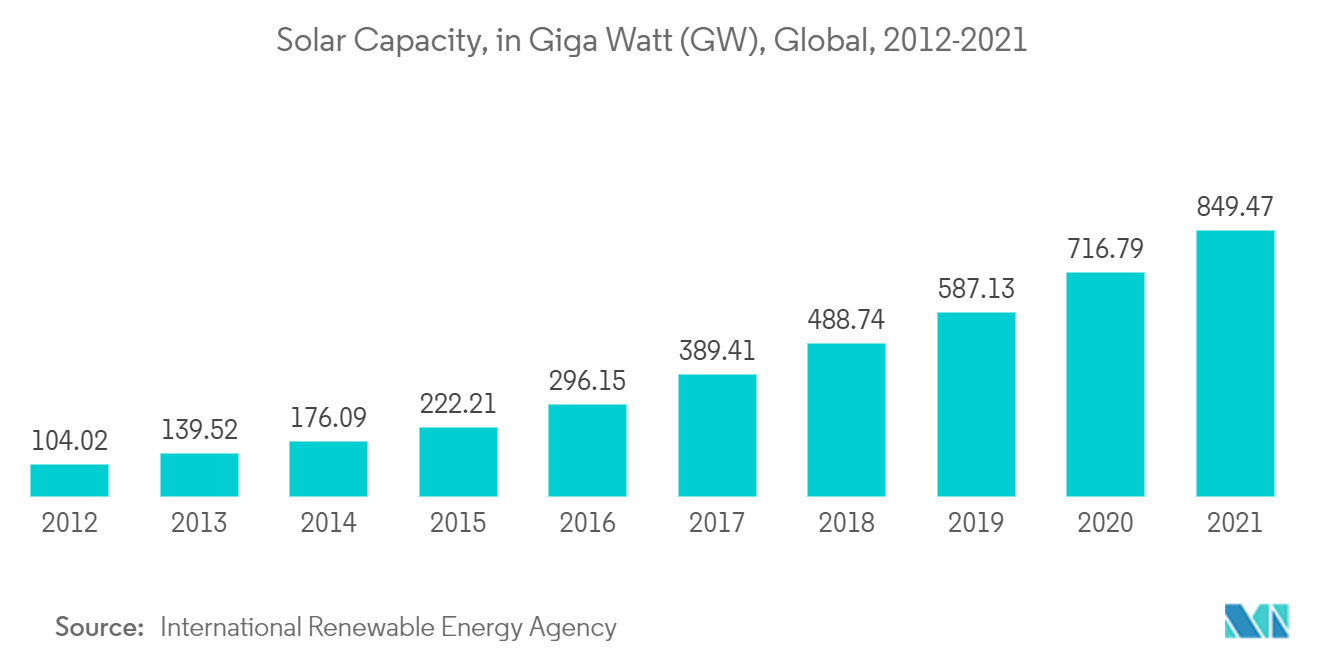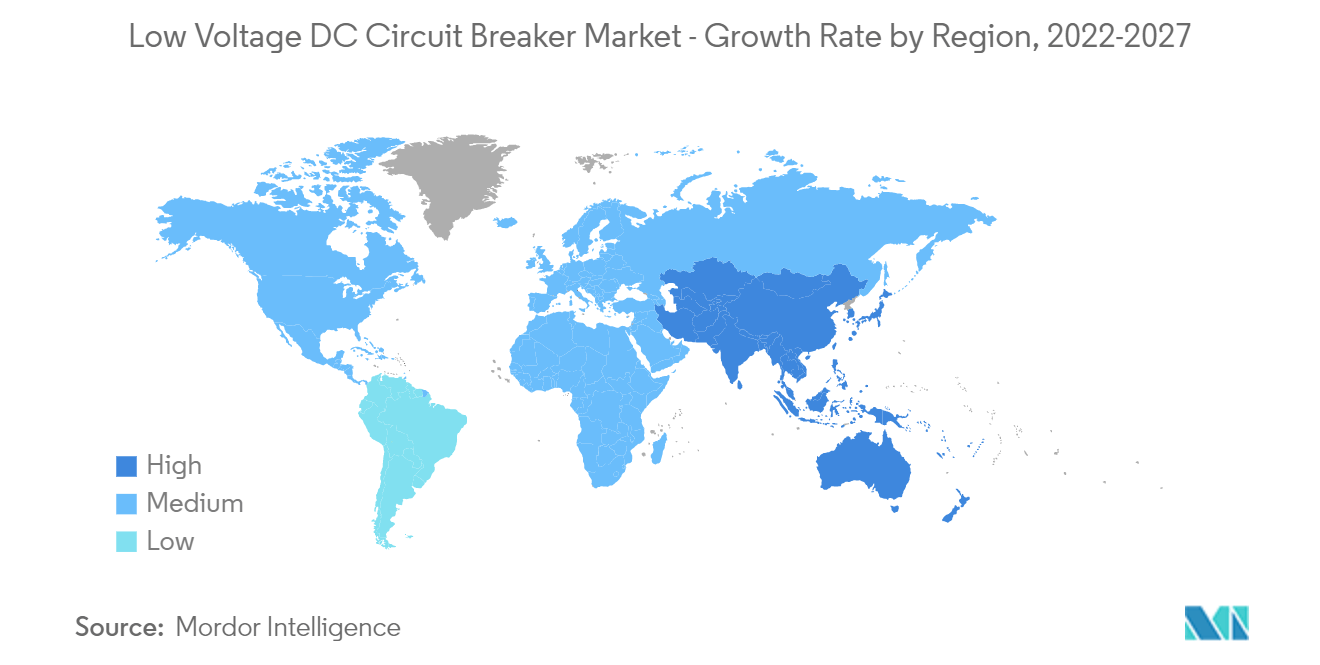Market Trends of Low Voltage DC Circuit Breaker Industry
This section covers the major market trends shaping the Low Voltage DC Circuit Breaker Market according to our research experts:
Solar Energy Sector to Dominate the Market
The solar energy sector is expected to be the fastest-growing market for low voltage DC circuit breakers over the forecast period. Low voltage circuit breakers are used in both small-scale and utility-size solar projects to isolate faulty solar PV panels.
A majority of installed capacity was added in the form of utility-scale solar farms, all of which use DC circuit breakers to address 'first-fault' conditions, which correspond to the first unintentional connection to the earth, which is when the DC circuit breaker safely disconnects the photovoltaic array from the inverter under load conditions.
As per the Solar Energy Industries Association, there was nearly 115 GW of under-construction and under-development solar projects in July 2020. The construction of these projects is expected to be a significant driver for the low voltage circuit breakers market. The developed countries of North America and Europe and developing countries of Asia-Pacific are the major hotspots for solar PV and, in turn, low voltage DC circuit breakers in the sector.
Moreover, solar project developers reported that they have planned to make 3,616 MW of large-scale battery storage operational in the United States between 2020 and 2023. Therefore, an increase in the country's total battery energy storage projects is expected to boost the demand for the low voltage DC circuit breaker systems market.
Increasing demand for clean energy is one of the primary drivers for the solar energy sector and, in turn, for the DC circuit breakers in the sector. Therefore, with an increase in the demand for clean energy, the solar energy sector is expected to grow and boost the low voltage DC circuit breakers market in the solar energy sector.

Asia-Pacific to Dominate the Market
Asia-Pacific is one of the fastest-growing markets owing to increasing population, urbanization, and industrialization. As a result, the demand for clean energy is expected to increase, subsequently leading to higher demand for low voltage DC circuit breakers in the near future.
In March 2020, the Solar Energy Corporation of India (SECI), a central public sector undertaking (CPSU) under the Ministry of New and Renewable Energy, announced that it was planning to enter into commercial operations and set up 5,000 MW of solar-wind-storage hybrid capacity over ten years. The plan of the corporation is to initially set up 500 MW of the 5,000 MW capacity at the cost of about INR 2,800 crore over the next two years, which will, in turn, support the growth of the low voltage DC circuit breaker market in the region.
Further, solar projects with battery energy storage systems (BEES) are gradually gaining traction in India. In the past, SECI announced a few tenders incorporating BESS with solar projects. In September 2020, SECI announced tenders for a 100 MW (AC) solar power project along with a 50 MW/150 MWh battery energy storage system (BESS) to be developed in Chhattisgarh. In January 2020, SECI issued a tender for setting up 4 MW of grid-connected floating solar projects with 2 MW of battery energy storage system in Andaman. Therefore, an increase in energy storage systems is likely to increase the demand for low voltage DC circuit breakers.
Moreover, the Chinese government had set 12% of New Energy Vehicles (NEV) share mandates for 2020. Non-Chinese brands account for approximately 50% of the total passenger car sales. Most of these cars are produced in China, in joint ventures (JVs) with Chinese companies.
These factors are likely to propel the demand for low voltage DC circuit breakers in the region during the forecast period.


